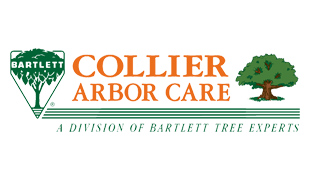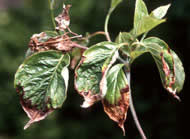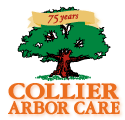|
Current Issue - Spring/Summer 2013 Show Back Issues |
| ||
Be on the Lookout for Dogwood Anthracnose
|
 The finished root area is loaded with nutrients to promote healthy tree functions.  In Root Invigoration, soil is loosened with the supersonic air tool to relieve compaction. Give Plants a Boost with Root InvigorationDo you have a favorite or specimen tree you want to keep healthy? Or do you have a tree or shrub in the landscape that is not growing vigorously? Root and soil disorders are the leading causes of premature landscape plant decline. Compacted soil, girdling roots, root rots, lack of organic matter, poor nutrition and poor or heavy clay soils can all contribute to poor plant performance and ill-health. Solution to unhealthy plants: Our root invigoration program!This unique plant invigorating program combines our most beneficial plant health enhancing programs into a comprehensive package designed to invigorate your plants root system. By relieving soil compaction, improving soil aeration, adding organic compost and nutrients, we stimulate healthy soil biological activity and conditions for vigorous root growth. What does root enhancement achieve?Stimulating root growth allows some declining trees and shrubs to recover their health over time or assists in maintaining a favorite plant's health and beauty. A healthy root system promotes all other tree functions such as: trunk growth, defense, fruit, flower and leaf production. Steps in root zone invigoration
What are the Results?Each plant is unique, but typically within a few weeks new root growth will be stimulated, and continue to grow in the improved soil environment. The next growing season or flush of growth the plant will have increased growth and density, healthier looking foliage and a more lively appearance. Due to a stronger root system and improved nutrient availability, the treated plant will have better defenses and increased longevity. Questions about your soil quality? Call today and let Collier Arbor Care help with a free Soil Health consultation! Create a Living Sculpture with EspalierAn "espalier," (pronounced "es-PAL-yer") is the ancient practice of training plants to grow in a flat plane against a wall, fence, or trellis. The practice originally was used in the old world to conserve space. The English located espaliered fruit trees against a wall with a southern exposure for cold protection and early fruit ripening. Today, espaliers are often used for decorative accents in the landscape or for growing grapes or fruit trees. An espalier is a living sculpture in the garden and is especially effective against a blank wall to relieve the monotony. With landscape spaces around homes becoming smaller, an espaliered plant has considerable appeal.  An example of Espalier — the flexible branches of a pear tree have been trained in a horizontal pattern against a flat surface.  Liven up a large, flat plane with espalier as with this camellia. Almost any plant can be used, but plants with flexible branches are easiest. There are numerous espalier techniques to employ from the very simple and informal designs to complicated formal patterns and even fences. One of the popular patterns is a multiple, horizontal cordon or arms. It consists of a straight trunk and has two or three sets of opposite lateral branches trained in tiers. Formal espaliers usually need a trellis or some other framework for support. The framework also provides a guide for training branches. Wooden trellises should be constructed of rot-resistant woods or pressure-treated lumber. Use terminal posts with wires stretched taut between them at different levels or tiers. Some espaliers are trained against a solid wall of either stone or wood without a supporting framework. The plant should be placed six to ten inches away from the wall to allow adequate room for the root growth, air circulation and pest control. Train plants directly to masonry walls with anchoring devices such as masonry staples or screw eyes in the mortared joints. On wood walls screw eyes work best. To establish and maintain an espalier, prune and tie new shoots to conform to the pattern. Prune all stray branches that grow outward at right angles to the flat surface and those that grow beyond the boundaries of the desired pattern. Use a stretchy plastic plant tie tape to loosely train new shoots to the wire or hardware. To maintain an espalier takes a lot of regular maintenance. During the first several years of establishment, it may require pruning three to four times during the year for proper training, however once established maintain by an annual pruning. Almost any plant can be espaliered but some are particularly suitable as espaliers. Plants that produce many flexible lateral branches and attractive flowers, fruit, and foliage and/or bark are excellent choices. If you are using an apple tree or other fruit trees be sure to use a dwarfing rootstock. This will help to minimize pruning and also allow early fruiting. For apples use an M-26 or M-27 dwarf rootstock. The following species are good choices for espalier plants:
|
|
Home |
Services |
The Arbor Advisor |
Garden Calendar |
About Us |
Fact Sheets |
Contact Us |
Site Map Collier Arbor Care Portland 503-722-7267 Vancouver (360) 693-6056 Site contents and design ©2013 Collier Arbor Care |







 Signs of infection on Dogwood leaves.
Signs of infection on Dogwood leaves. 

 top »
top »